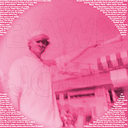New Buran photos.
On the 35th anniversary of Buran’s orbital flight, Russia’s space agency Roscosmos has released a set of previously classified documents and photos on the Buran program. I’ve decided to cover this release in two articles, the first on the photographs and the second on diagrams, illustrations and posters. All of the contents of this release are available in full resolution at buranarchive.space.
OK-ML1 on the launchpad.
A welcome treat for Buran fans, among the release were 6 (albeit very similar) black-and-white negatives of Buran test article OK-ML1 on Baikonur’s launchpad 110/37 in the second half of 1986. These are the best photos of this test article at the pad we have; the only previous photographic evidence of the rollout were two very low resolution images of the stack taken from the side of the rocket from a large distance — the orbiter could be identified only by the distinctive tile pattern on the underside of the wings.
And as an extra treat — OK-ML1 and Energia 4M on the “Grasshopper” transporter-erector.
Energia test article 4M assembly and tests.
Flying in atop the Myasishchev VM-T Atlant over two flights in early 1982, 4M was the first proper Energia test article to arrive in Baikonur (a crude mockup built on-site was used as early as 1979 for the first ground handling exercises).
We have great high-resolution views of the 4M core stage and an amazing view of the Blok Ya connection plate/interface (visible in the left photo). Energia 4M was used for a variety of tests with and without orbiters, among them ground tests, fueling tests, vibration tests and interface tests with orbiter test articles OK-ML1 and OK-MT.
It’s rare to see photographs of a bare Blok Ya launch table adapter, especially while it’s being worked on. The Energia core stage interface is visible on the top left. The second image shows the mock-up Blok A boosters waiting for the Blok Ts core stage in the Energia assembly stand. Note the lack of recovery bays — the boosters look rather plain without them!
Energia 4M being rolled out to the UKSS on “Grasshopper” transporter-erector for pad tests. The Grasshoppers were originally built for the N-1 program and subsequently adapted for use with Energia stacks.
In this configuration, the core stage had test versions of the RD-0120 engines, the Blok A booster mock-up remained engineless.
The stack was rolled out to the Universal Test Stand and Launch Complex (UKSS) at least twice in 1983. It is not clear which of the two rollouts is depicted in the photos released.
Blok A boosters during assembly.
The seasoned Energia enthusiast might recognize this photo, as low resolution copies of it are available on the Internet, but never before have we had a view quite as detailed as this.
RD-170 assembly.
We also have great shots of the Blok A boosters’ venerable RD-170 engines, to this day the most powerful liquid fueled engines ever flown. The only engine more powerful than the RD-170 to be test fired is the RD-171MV — a modernised version of the RD-170 (or rather the single axis gimbaling RD-171) destined for the as-yet-unflown Irtysh rocket.
RD-0120 photos (or rather photo).
Also among the release were two copies of the relatively well known photo of four RD-0120 engines in Baikonur. In classic RGANTD/Roscosmos fashion, these (together with the copy on our website) are three differently cropped versions of the same frame, none of them larger than the other two, meaning that there isn’t one “definitive” full-frame version. Oh and one is black-and-white while the other two are in color but with vastly different color profiles.
That’s all for now. Make sure to check out the full contents of the release on buranarchive.space — you can search for “ROSC23” or click the ROSC23 tag.
In the meantime, I’ll try to get the diagrams translated for part 2.
